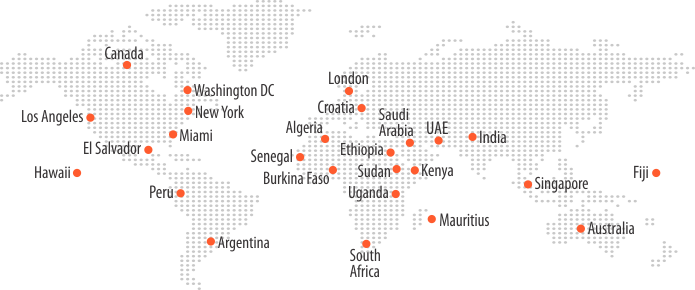Telco Fraud Prevention Strategies and Revenue Assurance in the 5G Era

The market innovations presented by 5G has helped to reduce latency with faster connection speed and higher device capacity but at the same time it is posing a challenge for telecom companies. As data travels quickly across the world, linking apps, devices, and users, and providing services at a lightning speed, telecom companies are scrambling to keep pace with revenue assurance systems and strategies. Telecom companies might have improved the art of usual revenue assurance but the latest data-driven revenue sources that 5G’s integration to IoT (Internet of Things) unearths, is a different ballgame.
According to a survey by Forbes Business Insights, the global fraud detection and prevention market value is projected to hit $110 billion by 2026 from $22 billion in 2019. With the advancement of 5G, fraudsters have increasingly outsmarted the preventive systems and found innovative ways to hack telecom networks, putting a strain on operators’ thin margins.
5G network implementations are currently neither widespread nor mission critical. As a result, telecom companies can manage revenue losses without having a significant effect on their margins so far. But the scenes will change rapidly in the next 3-5 years with increasing adoption of 5G network across several countries. Telecom companies must be prepared with modernized IT and operating systems as soon as possible for revenue assurance in the tech-elevating 5G era.
Unfortunately, telecom companies are attempting to use aging network data platform infrastructures for 5G. This entails inheriting a patchwork of security challenges and adding fresh and varied layers of complexity, potentially raising the possibility of revenue loss through frauds. Let’s understand the telecom frauds and revenue assurance in the 5G era.
Telecom Frauds in the Age of 5G
We need to understand the capacity and potential of 5G in the backdrop of IoT. The concern is not so much with the 5G technology of the mobile networks and their capacity to accommodate up to one million devices per square kilometer, as it is the fabrication of IoT-based device networks which will connect through 5G.
It has also become far easier for fraudsters to break into and maneuver a slower tech stack. This can be addressed by in-event decisions based on complex data streaming to avoid revenue loss and prevent frauds. This requires database capabilities and restructuring of the stacks.
Fraudsters hack into IoT devices with staggering frequency to make fraudulent transactions and to initiate Distributed Denial-of-Service attacks. They are already penetrating the networks through messages, phone calls, and the IP network to deceit CSPs (Communication Service Providers) and their billion-dollar revenue, while the providers are battling SIM card frauds.
SIM boxing is one of the biggest frauds in the telco industry where fraudsters utilize SIM to make international calls that seem to be domestic calls. Fraudsters mask as authorized intermediaries and then call on SIM boxes across the country borders, devices which disguise as local mobile phones.
Operators bear a massive amount of revenue loss due to SIM Boxing. This also leads to the governments missing out on tax revenue, while the users are left with low-quality services. Fraudsters can also manipulate eSIMs, that have eased connectivity issues but also allowed the hackers to embezzle with the IoT network data.
Fraud Prevention Strategies
Real-time fraud detection and prevention is certainly more effective than post-fraud investigations. However, it is not easy to prevent and detect telco frauds in real-time. Age-old preventive technologies implemented by CSPs are incompetent to fight against the 5G fraud techniques. Telecom companies therefore need to set up innovative data management platforms that can absorb data from multiple networks to reduce latency and apply machine learning technology to counter frauds in real-time and implement fraud management solutions to mitigate frauds.
Real-time Revenue Assurance in the 5G Era
Telecom providers will do a lot to enhance their 5G age revenue protection and few of the important things to taken into consideration for revenue assurance are:
- The key to preventing revenue loss in real-time is big data and effective analytics.
- Evaluation of revenue leakage potential for each source.
- Inconsistency gaps and trend analysis.
- Network usage data with interconnect settlement, Billing statistics, and accounts database.
- AI/ML and Signaling Profiling to detect real-time fraud.
- A fast-data platform is required to identify and quickly react to prevent revenue loss.
- Telecom companies need advanced analytics and algorithms to detect in-event threats and responses, and enhanced rule-set that can use this analytical information to get to the forefront before the fraudsters.
- Edge Computing can also facilitate faster data management for in-event decision-making and reduced unwanted round trips.
- For improved telecom fraud management, telecom companies should opt for digital twins to operate real-time simulations.
- With the help of in-memory data storage, the use of access disks can be marginalized to quickly process the data.
Also, to support real-time decisions, cross-data center simulation is utilized for lower latency and enhanced data locality. A combination of these technologies allows an advantage of few milliseconds to the CSPs in making real-time decisions for revenue assurance and mitigate revenue loss.
Mitigate Risks through Fraud Management
5G and the widespread network of billions of linked IoT devices are complicating data sources and making tracking transactions in real time extremely difficult. In order to safeguard and increase 5G revenues by proactive instead of reactant interventions, telecom companies need real-time revenue assurance. This means investing in their technology frameworks before other industry disruptors take the lead.
A robust telecom fraud management solution by Panamax, includes advanced analysis and fraud prevention with artificial intelligence and business intelligence. Machine learning network-specific predictive models are used to defend enterprises from fraudsters. We offer ultimate revenue assurance and fraud management services to operators, carriers, and regulators globally, who strive to preserve their revenues and want to provide quality customer service.
Related Posts
Combating Telecom Fraud With Artificial Intelligence
Impact Of 5G On Unified Communications






